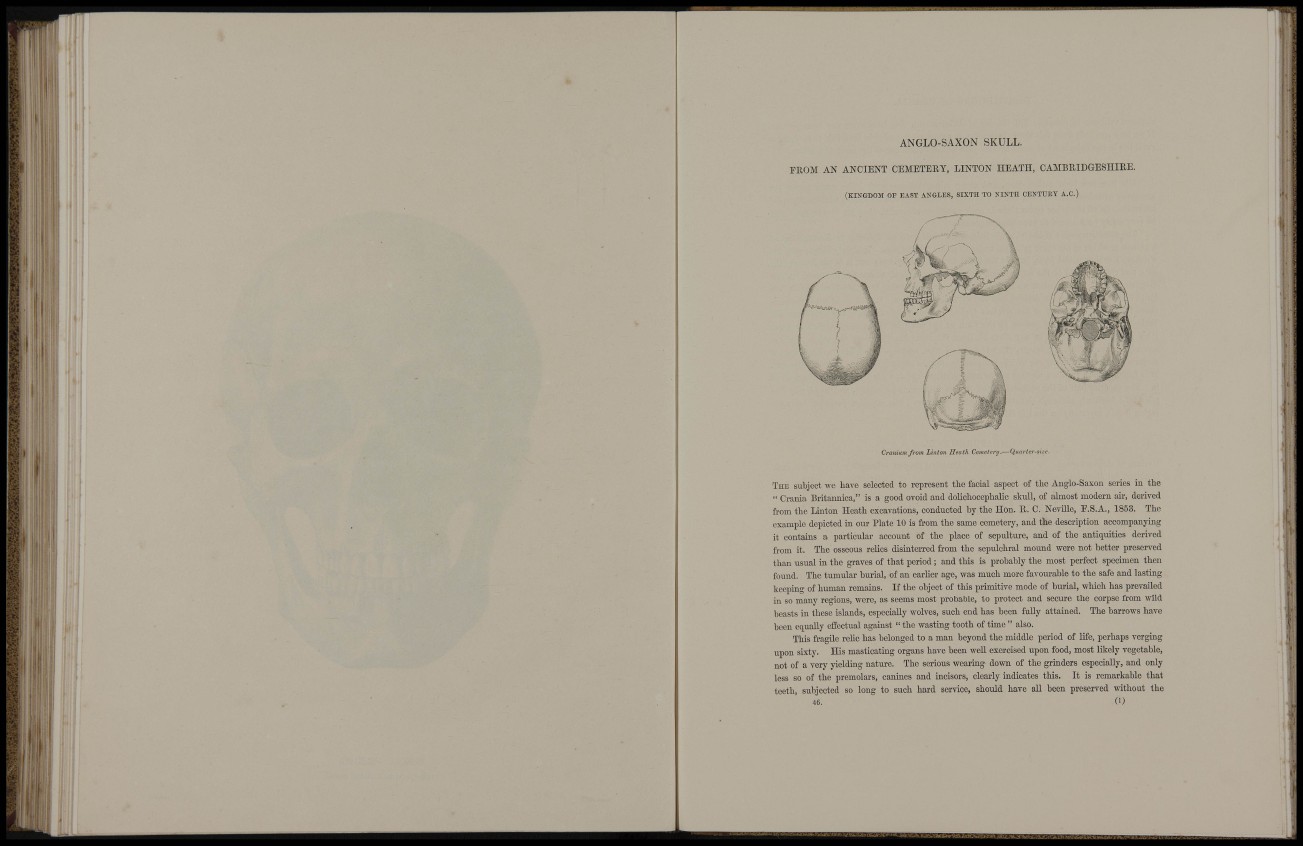
r ii
m
I
t
5 ;
S,. a. 'M :
ANGLO-SAXON SKULL.
PROM AN ANCIENT CEMETERY, LINTON HEATH, CAMBRIDGESHIRE.
(KINGDOM OF EAST ANGLES, SIXTH TO NINTH CENTUEY A.C.)
Cranium from Linion Heath Cemeteri/.—Quarter-size.
THE subject we have selected to represent the facial aspect of the Anglo-Saxon series in the
" Crania Britannica," is a good ovoid and dolichocephalic skull, of almost modern air, derived
from the Linton Heath excavations, conducted by the Hon. R. C. Neville, E.S.A., 1853. The
example depicted in oiir Plate 10 is from the same cemetery, and the description accompanying
it contains a particular account of the place of sepulture, and of the antiquities derived
from it. The osseous rehcs disinterred from the sepulchral mound were not better preserved
than usual in the graves of that period ; and this is probably the most perfect specimen then
found. The tumular burial, of an earlier age, was much more favourable to the safe and lasting
keeping of human remains. If the object of this primitive mode of bui-ial, which has prevailed
in so many regions, were, as seems most probable, to protect and secure the corpsc from wild
beasts in these islands, especially wolves, such end has been fuUy attained. The barrows have
been equally effectual against " the wasting tooth of time " also.
This fragile rehc has belonged to a man beyond the middle period of life, perhaps verging
upon sixty. His masticating organs have been well exercised upon food, most likely vegetable,
not of a very yielding nature. The serious wearing down of the grinders especially, and only
less so of the premolars, canines and incisors, clearly indicates this. It is remarkable that
teeth, subjected so long to such hard service, should have all been preserved without the
46. (1)
„i.1
r